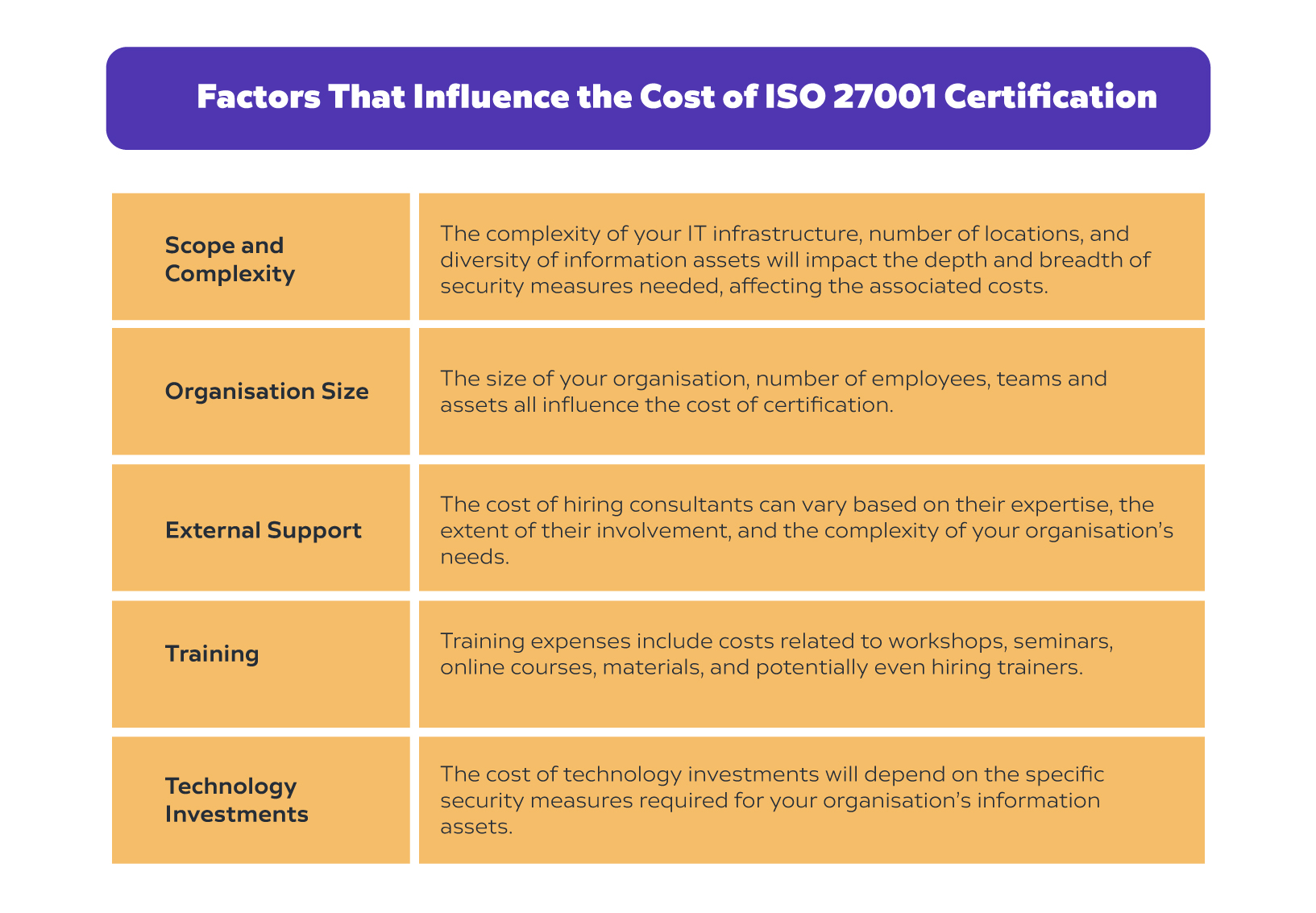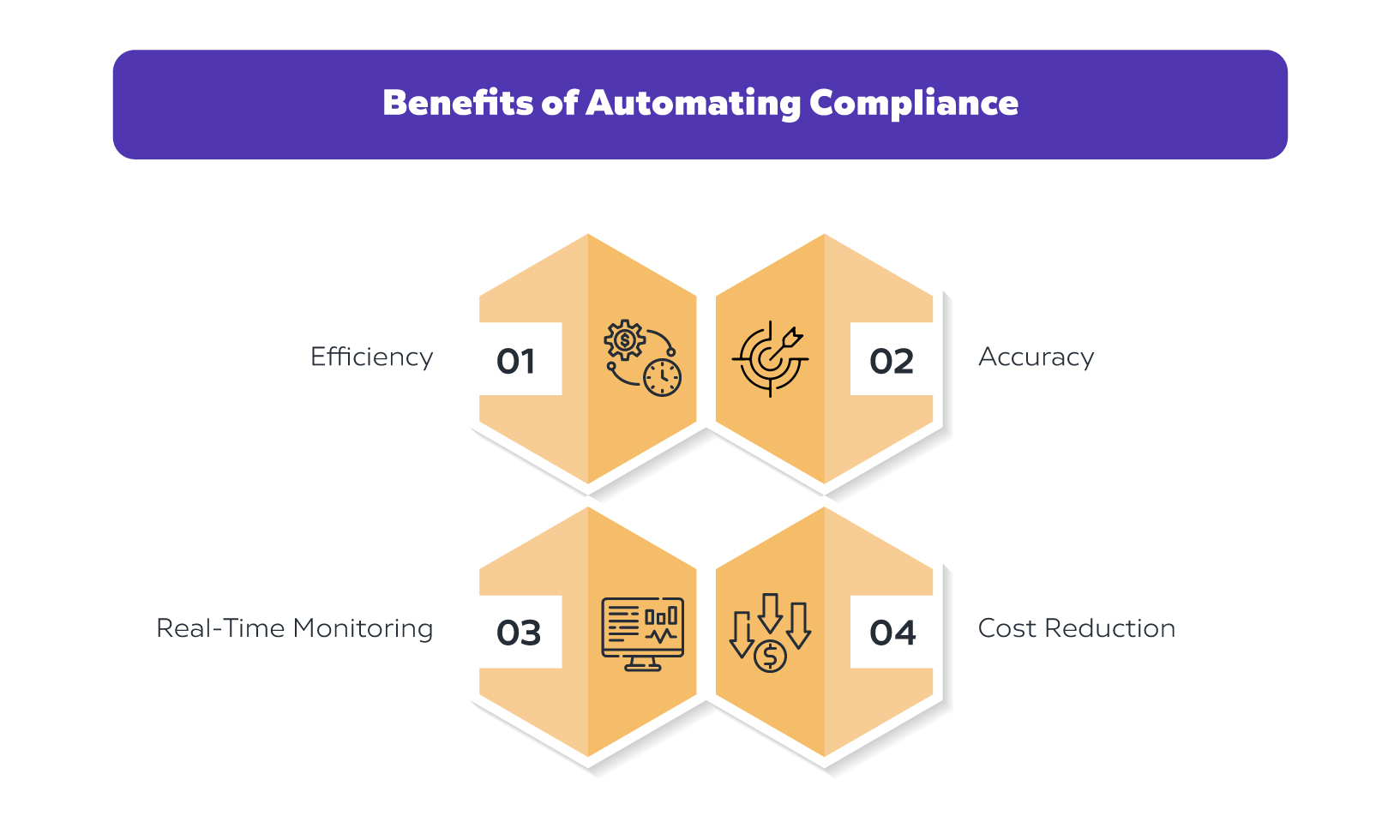In an era where data breaches and security lapses can cripple businesses, ISO 27001 Certification has emerged as the gold standard for information security management. Yet, as organisations in Australia consider this certification, a clear understanding of the associated costs is essential.
In this concise guide, we’ll dive into the ISO 27001 Certification process, breakdown the costs, and provide actionable insights for cost-effective compliance.
Key Facts
- ISO 27001 process includes a number of stages including risk assessment, ISMS development and compliance audits.
- Some costs to consider are process implementation and documentation time, technology investment and audit costs.
- The exact investment depends on a number of factors including current state of your information security, size of the organisation and scope and complexity of your IT infrastructure.
In an era where data breaches and security lapses can cripple businesses, ISO 27001 Certification has emerged as the gold standard for information security management. Yet, as organisations in Australia consider this certification, a clear understanding of the associated costs is essential.
In this concise guide, we’ll dive into the ISO 27001 Certification process, breakdown the costs, and provide actionable insights for cost-effective compliance.
Understanding ISO 27001 Certification
ISO 27001 Certification revolves around establishing, implementing, maintaining, and continually improving an Information Security Management System (ISMS). This systematic approach fortifies data confidentiality, integrity, and availability. The certification process includes:
Risk Assessment
Risk assessment is a critical initial step in ISO 27001 certification. It involves identifying and evaluating potential threats and vulnerabilities that could compromise the confidentiality, integrity, and availability of your organisation’s information assets.
This includes assessing both internal and external risks, such as cyberattacks, data breaches, natural disasters, and unauthorised access.
The goal is to comprehensively understand the risk landscape your organisation operates in, which serves as the foundation for making informed decisions about security measures.
ISMS Development
An Information Security Management System (ISMS) is a structured approach to managing sensitive information and ensuring its security. In this phase of ISO 27001 certification, you design and implement security controls and policies to mitigate the identified risks.
This involves creating a framework of guidelines and procedures that define how your organisation will handle, process, store, and transmit sensitive information.
The ISMS development phase ensures that security measures are tailored to your organisation’s specific needs and risk profile.
After receiving certification, your organisation is expected to regularly review and assess the effectiveness of your ISMS.
This involves conducting periodic reviews, assessments, and audits to identify areas for improvement.
Compliance Audits
ISO 27001 certification involves external auditors evaluating your organisation’s ISMS against the ISO 27001 standards. These auditors are independent and impartial, ensuring the credibility of the certification process.
The auditors review your documentation, procedures, and practices to determine if they align with the ISO 27001 requirements.
This audit process helps verify that your organisation has effectively implemented the necessary security controls and policies to protect information assets.
Breaking Down the Cost of ISO 27001 Certification
The cost of ISO 27001 certification in Australia varies depending on the organisation size, the current state of compliance and scope of work required to meet the ISO 27001 requirements and other specific circumstances..
The investment is aimed at strengthening your information security practices, demonstrating your commitment to safeguarding sensitive data, and building trust with stakeholders. Here are the factors that form part of the cost of ISO 27001 certification.

Tips for Cost-Effective ISO 27001 Compliance
By implementing the following tips, you can make the journey towards ISO 27001 compliance more cost-effective while still maintaining the security and integrity of your organisation’s information assets.
Remember that the goal is not just achieving certification, but establishing a sustainable and effective information security framework that can adapt to the evolving threat landscape and organisational changes.
Prioritise Essentials
Instead of trying to secure every asset equally, concentrate your efforts on the most critical information assets and high-risk areas.
Conduct a thorough risk assessment to identify the assets that are most valuable to your organisation and could cause the most damage if compromised.
By focusing on these essentials, you can allocate your resources and efforts more effectively, ensuring that the most important aspects of your information security are adequately protected.
In-House Champions
Develop internal expertise by cultivating a team of individuals who specialise in information security and ISO 27001 compliance.
These in-house champions can become subject matter experts, assisting the implementation and management of your Information Security Management System (ISMS).
Stepwise Approach
ISO 27001 compliance doesn’t have to be achieved in a single sweeping effort. Adopt a stepwise approach where you gradually implement security controls and procedures over time.
This phased approach allows you to manage costs more effectively, spread out resource allocation, and avoid overwhelming your organisation’s capabilities.
It also enables you to continuously improve your security posture without incurring a massive upfront investment.
Efficient Documentation
While documentation is a crucial aspect of ISO 27001 compliance, strive for a balance between comprehensive documentation and efficiency.
Develop streamlined documentation that accurately captures your security controls, policies, and procedures without excessive redundancy.
This approach helps minimise the time and effort required for documentation tasks, reducing associated costs while maintaining the necessary level of detail.
Leverage Technology
Embrace technology solutions and automation platforms that are specifically designed to facilitate compliance with ISO 27001 requirements.
These platforms can help streamline various processes, such as risk assessments, policy management, incident tracking, and reporting.
By automating repetitive tasks and processes, you can increase efficiency, reduce the potential for human error, and optimise resource utilisation.

How We Can Help
At CloudJoy, a significant aspect of our IT consulting services involves guiding clients through the journey of attaining and upholding compliance certifications.
We have joined forces with Scrut Automation to automate compliance audits, assuring our clients and their stakeholders that their data practices and systems adhere to stringent security and compliance requisites.
By harnessing Scrut Automation’s capabilities, we streamline the assessment and control selection process, effectively expediting the path to ISO 27001 certification and reducing costs along the way.
Leveraging Scrut Automation’s advanced technology, we can readily pinpoint potential vulnerabilities and recommend suitable controls, saving you from unforeseen expenses in the future.
Our team of experts can seamlessly implement these controls within your systems and enhance security measures while optimising costs.
Contact us to get started and receive a quote tailored to your business.
